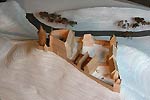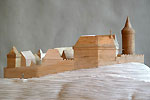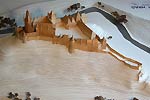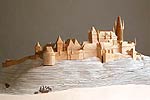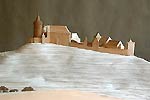Despite all research the information
concerning several buildings remains varied.
While almost all façade details and floor plans of many buildings are
sufficiently reproducible, in others these can only be found fragmentarily
or not at all. This fact was taken into account by the visualisation of
the research results as part of this project. This is the reason for the
choice of two forms of presentation.
Three dimensional model of Křivoklát Castle
The first visualisation consists of a
classical technical model building in the scale 1:500, which
disregards smaller orifices such as windows, doors and other details.
The terrain has been extensively reproduced by means of altitude layer
lines in order to make the construction and concept of the castle complex
intelligible, including the pathways and construction and supply logistics.
When seen methodically this model conforms to the current highest
scientific demands of Bohemian castle research.
Two older analogue models illustrate the constructional modifications to
the castle during other reconstruction periods.
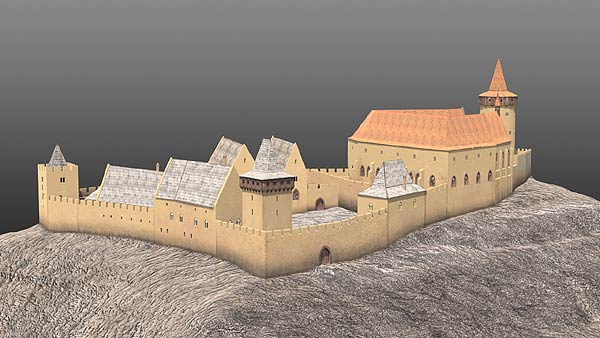
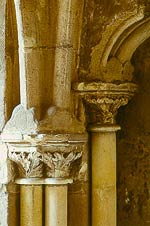 |
For this visualised variation it
was necessary to add reliable and accurate details to supplement
missing facts. This is, in view of the long standing systematic
studies of contemporary Bohemian castle production, both possible
and justifiable. |
